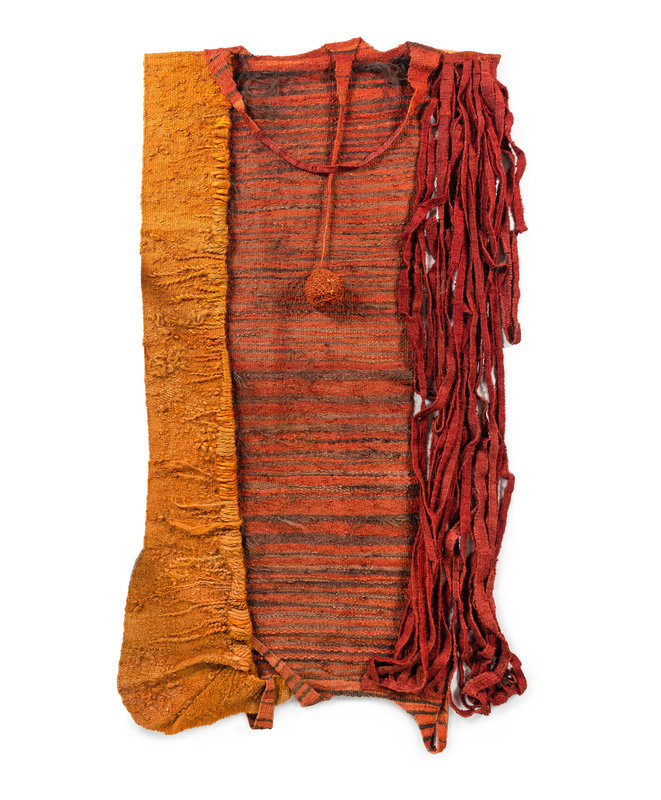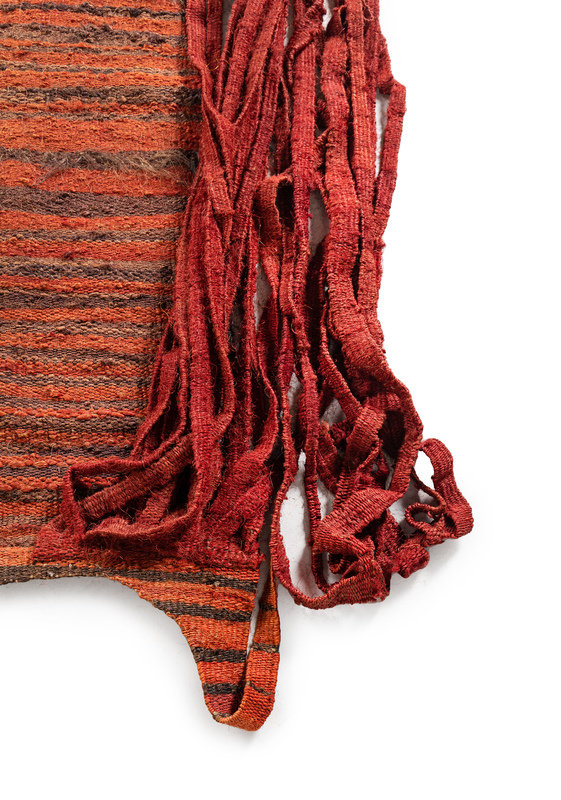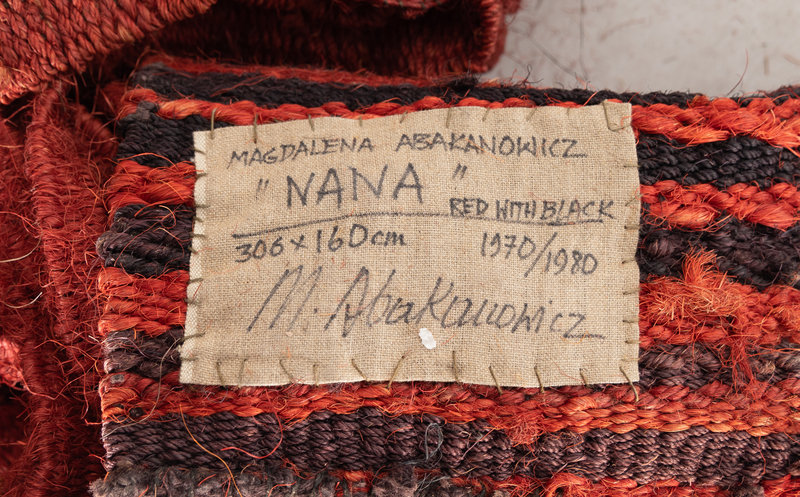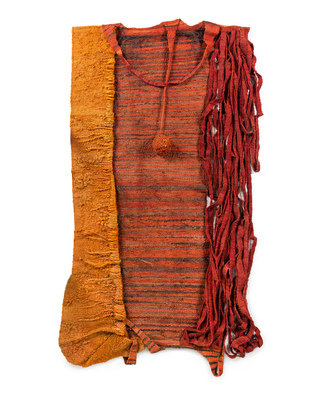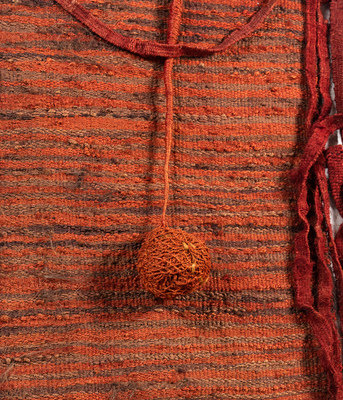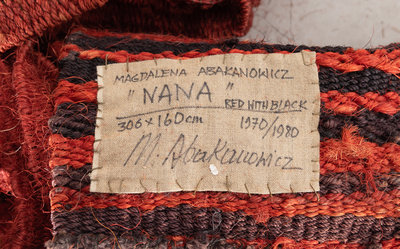"Art will remain the most astonishing activity of mankind born out of struggle between wisdom and madness, between dream and reality in our mind. Each scientific discovery opens doors behind which we are confronted with new closed doors. Art does not solve problems but makes us aware of their existence. It opens our eyes to see and our brain to imagine. To have imagination and to be aware of it means to benefit from possessing an inner richness and a spontaneous and endless floor of images. It means to see the world in its entirely, since the point of the images is to show all that which escapes conceptualization."
-Magdalena Abakanowicz
Magdalena Abakanowicz (Polish, 1930-2017) – known as the godmother of installation art – has the extraordinary ability to create works that are experienced rather than observed, both existential and intimate in the same breath. We are proud to present to you in this sale two works that accurately frame this dichotomy: NANA (Red with Black) (1970-80) and Untitled (Face) (2005).
Born to an upper-class family with noble heritage in Falenty, Poland, on the outskirts of Warsaw, Marta Abakanowicz grew up idyllically, and then very quickly. German tanks arrived in 1939; her mother’s arm was shot off by a drunken soldier four years later, and the family began fleeing consecutive Soviet and Nazi invasions. She became a nurse's aide at age 14 at a hospital in Warsaw, a child witnessing firsthand the horrors of war. As the frontlines approached, the family moved to anonymity on the Baltic coast. After completing high school, Marta changed her name to Magdalena and moved to Warsaw, doing manual labor and giving blood to support herself.
After enrolling in the Academy of Fine Arts in Warsaw at age 20, Abakanowicz would be discouraged from the “masculine” discipline of painting, which was ultimately for the best, as her bold vision and creative playing with medium would have been constricted and confined in the state-approved genre of Socialist Realism. It was this considerable corresponding lack of academic and masculine oversight which allowed her true creative freedom.
Following her education, Abakanowicz began to make work influenced by Constructivism, leading to her first solo show in Warsaw in the spring of 1960 that featured four weavings alongside her gouaches and watercolors. This show led to her inclusion in the first Biennale Internationale de le Tapisserie in Lausanne, Switzerland, in 1962, which would shape the rest of her artistic development, and marked the beginning of her Abakans.
Abakanowicz’s eponymous Abakans are three-dimensional fiber works span as much as thirteen feet, woven using her own technique from found material, including sisal ropes from harbors, along with rope, hemp, flax, wool, and horsehair. Abakans are womb-like, both comforting and suffocating in their envelopment, and ominous when presenting in multiples. Abakanowicz was childless; the spaces she creates make the viewer’s role embryonic. The womanly art of textile work produced flat decorations to be looked at; Abakanowicz creates an inoccupancy a viewer can’t help but experience. The subject of Abakanowicz’s oeuvre was primarily the human body, which she dissected and reassembled with a calculated omniscience, as if she herself did not possess one. “When examining man, I am in fact examining myself,” she said. “My forms are the skins I strip off myself one by one, marking the milestones along my road.” NANA (Red with Black) is a behemoth, a true Abakan, roughhewn and laboriously stitched, an excellent example of exactly the type of labor Abakanowicz wished onlookers to experience.
The influence of Abakanowicz’s childhood can be seen in the disfigured forms of the latter part of her career, never whole but sometimes clumped together, missing integral parts but standing on their own. Chicagoans will be quick to recognize Agora (2004-06), an installation of 106 headless and armless iron sculptures in Grant Park, the largest figurative sculpture of its time. Agora evokes a sense of crowdedness, yet even en masse, the forms are unique in texture, with surfaces resembling skin or bark.
Our second offering, Untitled (Face) (2005), comes from a private collection, acquired directly from the artist during her tenure in Chicago during the creation of Agora. Untitled (Face) is an amalgamation of Abakanowicz’s study of the human form, disembodied and fragile, close-mouthed, and creased with concern. It is equal parts haunting and earnest, a fitting offering from the artist herself.
Abakanowicz was laid to rest in Warsaw in 2017. In addition to her contribution to the landscape of Chicago, Abakanowicz’s work has been collected internationally and her accolades are many, though perhaps her biggest achievement has been the indelible mark she left as an artist on the practice of installation and the experience given to the viewer in her work.
